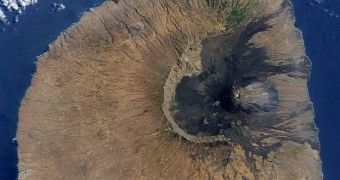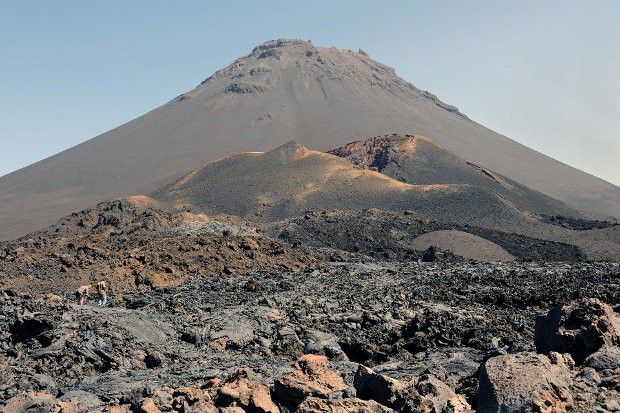The Fogo volcano on the island of Fogo in the Atlantic Ocean is one of the world's largest and most active. These days, it stands about 2,829 meters (around 9,300 feet) tall and erupts every 20 years or so. In fact, it was only in 2014 that it erupted last.
As fearsome as the Fogo volcano now is, it looks like, in its younger days, it was even more turbulent. In a study published earlier this week in the journal Science Advances, researchers at Columbia University say that, millennia ago, it collapsed and gave rise to a mammoth tsunami.
No, really, this wave was freakishly big
In their report in the journal Science Advances, the Columbia University scientists explain that, when it collapsed without warning around 73,000 years ago, the Fogo volcano in the Atlantic Ocean birthed a wave standing about 800 feet (nearly 250 meters) tall.
Just to put things into perspective, the tsunami that caused the Fukushima meltdown, the second major nuclear catastrophe in our planet's history, measured roughly 50 feet (15 meters) in height.
The ocean tsunami that formed when the Fogo volcano collapsed 73,000 years ago was so great that it swept over the Cape Verse Islands and even swallowed nearby Santiago Island whole, the Columbia University research team detail in their study.
“The estimated 160 cubic kilometers (40 cubic miles) of rock that Fogo lost during the collapse was dropped all at once, resulting in the 800-foot [250-meter] wave,” the scientists explain.
Then, the wave traveled to Santiago Island some 34 miles (55 kilometers) away and swallowed it. This explains the discovery of marine rocks as far as 2,000 feet (over 600 meters) inland and almost 650 feet (nearly 200 meters) above sea level on the island.
Thus, researchers say the marine rocks, some of which are the size of delivery vans and weigh around 770 tons, were ripped from the ocean floor and then carried on the island by the mammoth wave.
Such a massive tsunami could form again
The Columbia University research team explain that, as shown by their investigation, volcanoes and maybe even coastlines can every now and again collapse suddenly. In turn, this can give birth to humongous waves.
Admittedly, such natural disasters most likely happen merely once every tens of thousands of years. All the same, it would be wise to brace ourselves and make sure we can handle them, were one to happen in this day and age.
“Our point is that flank collapses can happen extremely fast and catastrophically, and therefore are capable of triggering giant tsunamis,” explains lead author Ricardo Ramalho.
“They probably don't happen very often. But we need to take this into account when we think about the hazard potential of these kinds of volcanic features,” the specialist adds.

 14 DAY TRIAL //
14 DAY TRIAL // 

